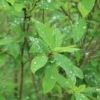So from what i've read St Johns Wort Seems Like a highly underated herb:
Hyperforin is believed to be the primary active constituent responsible for the antidepressant and anxiolytic properties of the extracts of St. John's wort.[13] It is a TRPC6 receptor agonist and, consequently, induces noncompetitive reuptake inhibition of monoamines including serotonin, norepinephrine, dopamine, and of GABA and glutamate, with IC50 values of 0.05-0.10 μg/mL for all compounds, with the exception of glutamate, which is in the 0.5 μg/mL range.[14] Hyperforin also inhibits the reuptake of glycine[15] and choline (IC50=8.5μM).[16] It modulates acetylcholine release in rat hippocampus and facilitates acetylcholine release in the striatum.[17][18] It antagonises the NMDA receptor, AMPA receptor and GABA receptors.[20][21] [...] Moreover, SJW is known to downregulate the β1 adrenoceptor and upregulate postsynaptic 5-HT1A and 5-HT2A receptors, both of which are a type of serotonin receptor.[5] [...]Procognitive effects of hyperforin have been observed in rats.[12] In vivo evidence suggests its efficacy against Alzheimer's disease,[20][31] an action it seems to share with its analogue, tetrahydrohyperforin.[32][33][34] [...]Hyperforin is also a powerful anti-inflammatory compound with anti-angiogenic, antibiotic, and neurotrophic properties.[45][46][50] ]Moreover, a hyperforin-free extract of St John's wort (Remotiv) may still have significant antidepressive effects.[52][53][...] Its action on TRPC6 may enable it to protect from ischaemic brain injury.[22] Its action on the TRPC6 cation channel is also believed to be responsible for its BDNF-like modulation of dendritic spine morphology in hippocampal pyramidal neurons.[23]
Hyperforin has been found to be a potent inhibitor of COX-1 and 5-LO with IC50 values of 300nM and 90nM respectively, giving it an anti-inflammatory action of approximately 3-18 times stronger than aspirin (although it is taken in far lesser quantities).[26] [...]Hyperforin has topical antibiotic properties and is active against methicillin-resistant strains of Staphylococcus aureus(MRSA) with a minimal inhibitory concentration (MIC) value of 1.0 μg/mL (1.86μM),[27] as well as against other gram-positive bacteria.[28] Chemical analogues of hyperforin have also exhibited in vitro activity against various bacterial species.[29] Hyperforin also has in vitro antimalarial effects.[30] [...]Hyperforin also has anticancer effects, both in vitro and in vivo, which are likely the result of its both anti-angiogenic and pro-apoptotic effects.[35] Several chemical analogues of hyperforin have also exhibited anticancer effects in vitro and in vivo.[36][37][38] Hyperforin also has anticlastogenic effects.[39] Hyperforin also inhibits SIRT1 and SIRT2 with aIC50 of 15±0.5μM and 28±0.2μM respectively.[40]
Hyperforin is an inhibitor of PTGS1, Arachidonate 5-lipoxygenase, SLCO1B1 and an inducer of cMOAT.[45][46][50] Arachidonate 5-lipoxygenase inhibitors are typically used to treat asthma, since the enzyme's product, leukotrienes, mediate some of the effects of asthma.
St John's wort has been shown to cause multiple drug interactions through induction of the cytochrome P450 enzymes CYP3A4 and CYP2C9, and CYP1A2 (females only). This drug-metabolizing enzyme induction results in the increased metabolism of certain drugs, leading to decreased plasma concentration and potential clinical effect.[36]The principal constituents thought to be responsible are hyperforin and amentoflavone.
SJW seems like it could be used for so many different conditions. It's downregulation of B1 Adrenoceptor basically makes it a long term beta blocker, something that would be pretty useful for anxiety disorders like SAD. Additionally the GABA antagonism could promote long term GABA upregulation, another factor that could assist anxiety sufferers.
SJW was actually the only substance I could find that actually upregulates 5-ht1a specifically, a serotonin receptor that supposedly is the main receptor responsible for the anti-depressant effects of SSRIs(They eventually desensitize it). 5-ht1a agonism facilitates dopamine release in the prefrontal cortex. 5-ht1a agonism also produces analgesia.
Antagonism of NMDA and AMPA receptors would probably promote long term upregulation of these receptors. This could underlie SJW's pro cognitive effects, utilizing a similar mechanism to the racetams(They are PAMs of AMPA, and cause subsequent NMDA upregulation). The facilitation and modulation of acetylcholine release definitely contributes to this.
SJW is also a highly effective antidepressant, being as or slightly more effective than prescription SSRIs in mild-moderate depression with a side effect profile similar to placebo.(3)
What's important to note is that all of the benefits I listed is mainly from Hyperforin, the main active alkaloid in SJW. But SJW also contains a bunch of other beneficial compounds in appreciable amounts; For example, 2-4% of the fresh herb(in dry weight) is pure Quercetin(Has anti-cancer, anti-inflammatory, anti-allergic, anti-asthmatic, antihypertensive, analgesic, neuroprotective, gastroprotective, anti-diabetic, cardiovascular disease-preventing, antioxidant, antidepressant-like (in rat models of depression), anxiolytic-like, sedative, antimicrobial and athletic performance-promoting effects.[93] Non-selective PDE1-4 inhibitor that is slightly selective for PDE3/4 over PDE1/2.[94])
0.5-2% is Hyperoside
(Has anti-fungal effects in vitro(against the plant pathogens P. guepini and Drechslera),[79]neuroprotective effects via the PI3K/Akt/Bad/BclXL signalling pathway in vitro,[80] anti-inflammatory effects via NF-κBinhibition in vitro,[81]D2 receptor-dependent antidepressant-like effects in vivo,[82]and antiglucocorticoid-like effects in vitro.[83])),
2-4% is Catechin(Anticancer, antioxidant, cardioprotective and antimicrobial.[75][76]Cannabinoid receptor CB1 ligand.[77])
and 0.3-1.6% is Rutein(Has anticancer, cardioprotective, nephroprotective, antioxidant, anti-inflammatory, antidiabetic, procognitive and antilipidaemic effects.[95])
But I think what's most important to discuss is the elephant in the room; phototoxicity. It is actually the only reason that I have not started taking this herb yet. I've been looking over the studies on it and I'm not sure what to make of them.
I have studies that state that pure hypericin promotes free radicals and phototoxicity(2). I also have anecdotal reports of people stating that their use of SJW damaged their vision. I also have a study that states that people who have cataracts had a significantly higher chance of stating that they have used SJW in the past.But despite all this, I have opposing evidence; For example, SJW extract(not pure hypericin) actually has an antioxidant effect(1) unlike (pure)hypericin which seems to have a pro-oxidant effect. Additionally, SJW is sold in Germany as a prescription medication. It has been used for over 15 years there, yet there is no increase in the incidence of cataracts to the best of my knowledge. Additionally, SJW faces all the harsh regulation and scrutiny that other(synthetic) prescription medications face. So I'd imagine, if their was even the slightest scrap of evidence that linked SJW to cataracts, they would have to, at the very least, put a warning label on their product, which they did not.
Does anybody know anything else about the dangers of SJW? It would be a shame if we let such an awesome herb go to waste because of a lack of investigation into it's phototoxic effects.
1. http://www.ncbi.nlm....sue=2&spage=181
2. http://www.ncbi.nlm....pubmed/10946573
3. http://www.ncbi.nlm....pubmed/18843608
Edited by β-Endorphin, 19 February 2015 - 11:00 PM.
















































